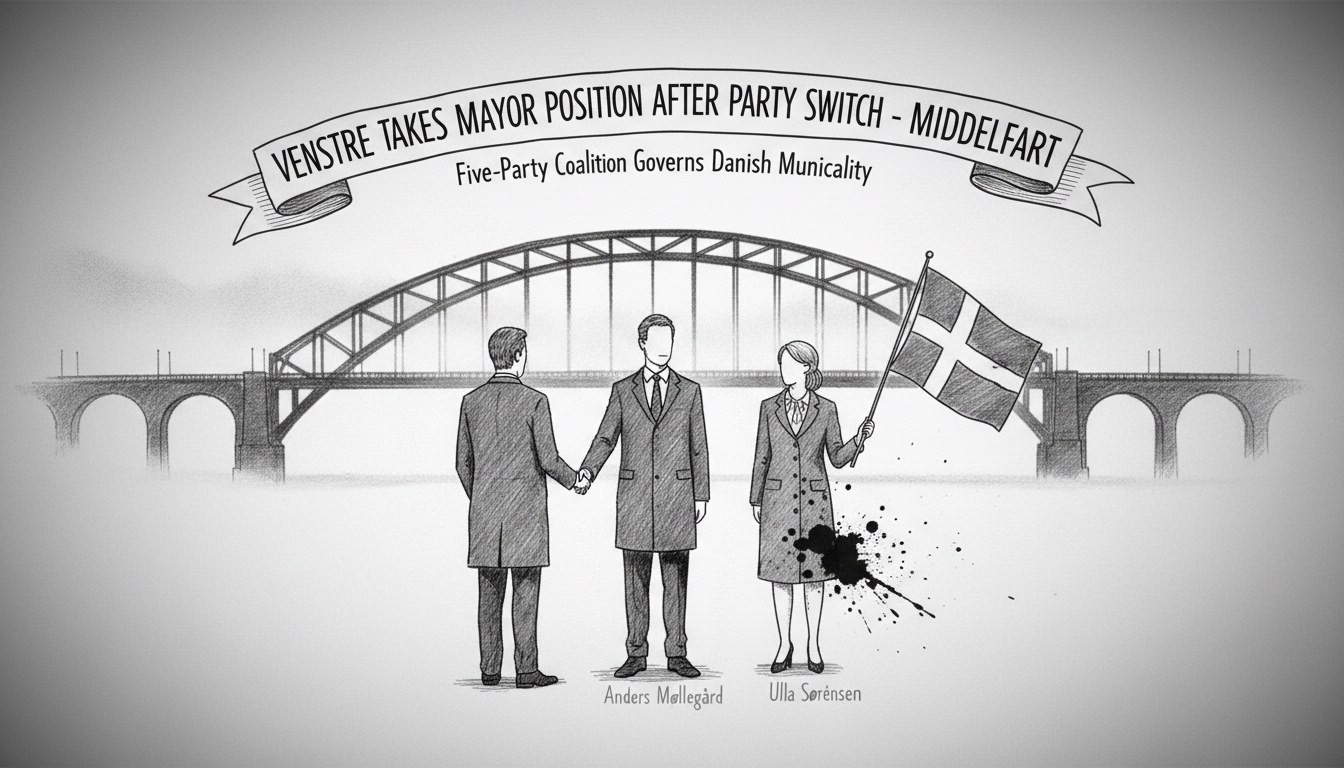The local political drama in Middelfart has reached a temporary conclusion. Venstre's lead candidate Anders Møllegård becomes the new mayor following a surprising party switch on Wednesday. A majority of 13 out of 25 council members now supports his appointment. This majority formed when current deputy mayor Ulla Sørensen switched from the Social Democrats to Venstre. She had declared herself negotiation leader but will not take the mayor position herself.
Danish municipal politics often feature shifting alliances and party changes. The current situation in Middelfart reflects broader trends in Danish local governance. Coalition building frequently determines leadership positions in Denmark's proportional representation system. This case shows how individual politicians can dramatically alter political landscapes overnight.
Venstre now leads Middelfart with support from Liberal Alliance, Denmark Democrats, Red-Green Alliance, and the Alternative. This diverse coalition spans traditional center-right and left-wing parties. Such broad alliances remain uncommon in Danish municipal politics. The arrangement suggests pragmatic cooperation overrides ideological differences in this case.
Ulla Sørensen's move from Socialdemokratiet represents a significant political shift. Her decision to change parties mid-term demonstrates the fluid nature of Danish local politics. Party loyalty sometimes yields to personal conviction or strategic calculation. The former deputy mayor now supports a Venstre-led administration despite her Social Democratic background.
What does this mean for Middelfart's residents? Local policies might see notable changes under the new leadership. Venstre typically advocates for different approaches to public services and development than Social Democrats. The new majority could shift municipal priorities regarding business development, environmental policies, and public spending.
The political realignment in Middelfart follows similar patterns seen in other Danish municipalities. Local council members occasionally change party affiliation between elections. These moves can reshape local governance without voters returning to the polls. The practice remains legal under Danish electoral law though it sometimes generates controversy.
International observers might find Danish municipal politics particularly dynamic. The proportional system creates frequent coalition governments at local levels. Party switches like Sørensen's occur periodically across Denmark's 98 municipalities. Each case reflects local political dynamics and individual career considerations.
Looking forward, the new administration faces immediate governance challenges. Building consensus among five different parties requires skilled negotiation. The coalition spans traditional political divides that might complicate decision-making. Middelfart residents will watch closely how this unusual alliance manages municipal affairs.
Danish local government experts note such broad coalitions often prove unstable. Maintaining unity across ideological lines presents ongoing difficulties. The Middelfart experiment will test whether diverse parties can sustain cooperative governance long-term.

